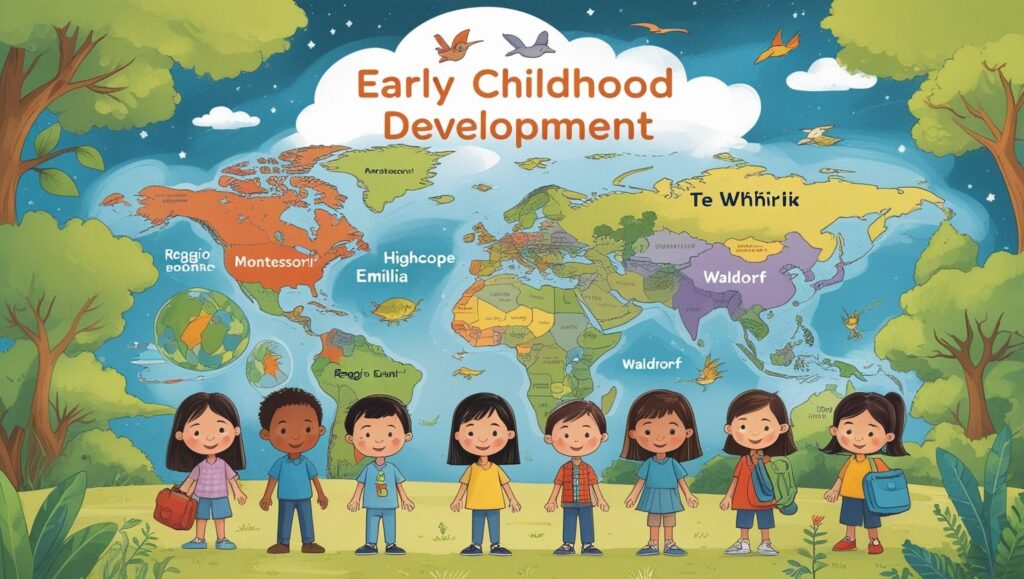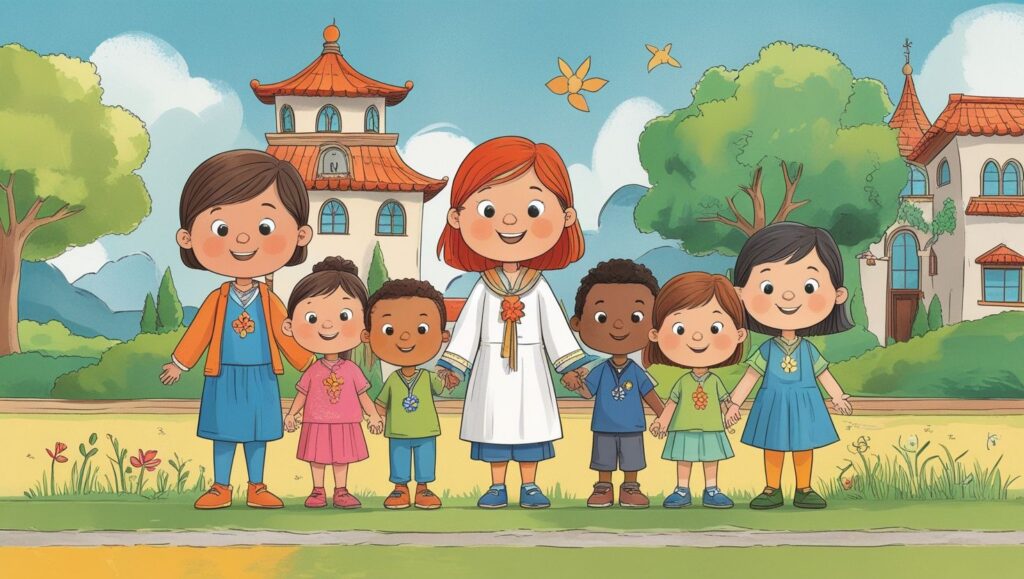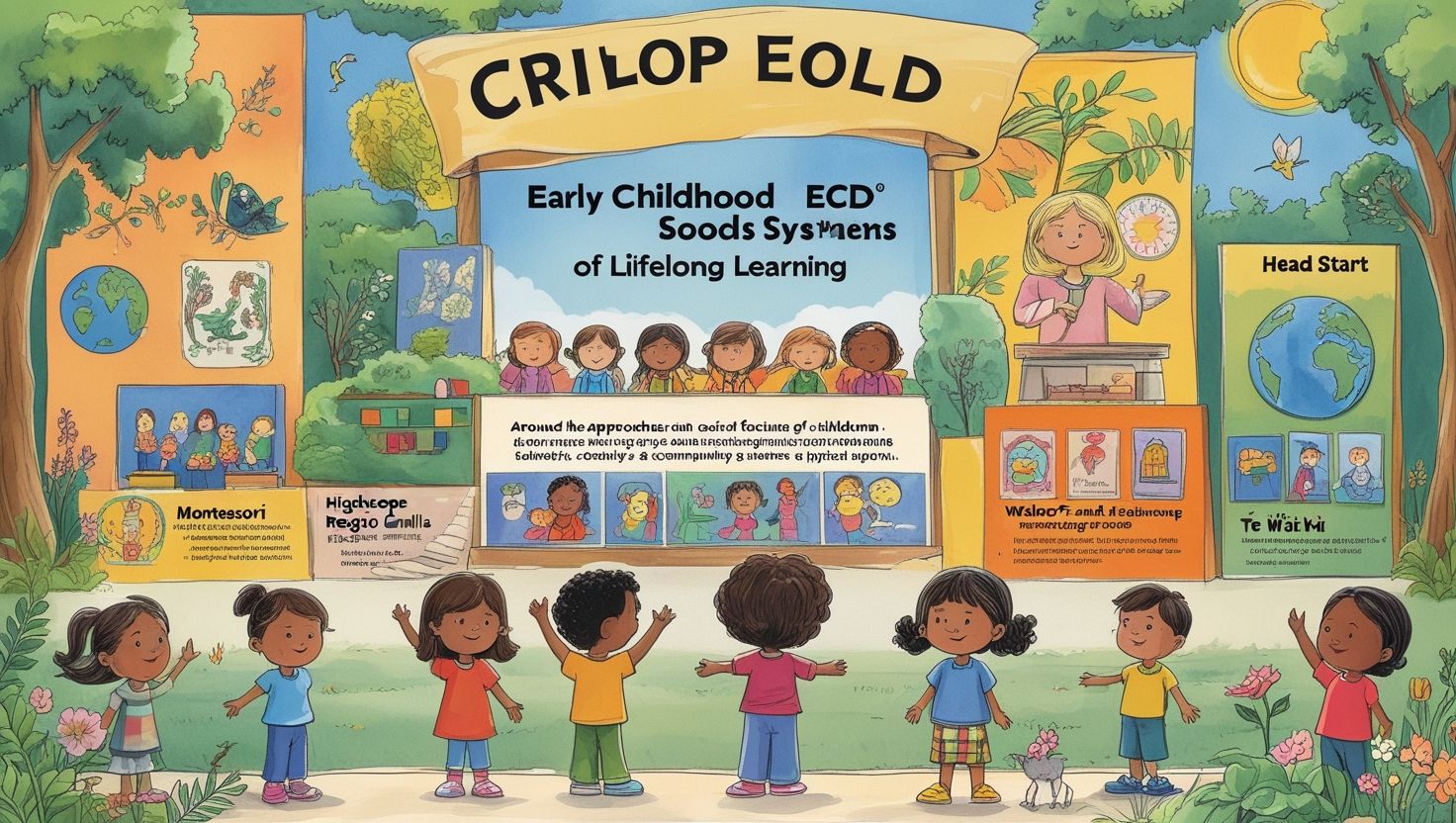Introduction
Different ECD Models in the World in Education, Early Childhood Development (ECD) models play a vital role in shaping the educational foundation of young learners. They focus on providing children with holistic development, including social, emotional, cognitive, and physical growth. Education experts agree that the earliest years of life lay the foundation for lifelong learning and success. Therefore, different countries have adopted unique approaches to ECD that reflect their cultural, social, and economic contexts. These models not only prepare children for formal schooling but also equip them with critical life skills.
Moreover, they emphasize the involvement of parents, teachers, and communities in shaping young minds. Since education is not one-size-fits-all, the existence of multiple ECD models highlights diverse perspectives in addressing childhood needs. Understanding these models helps educators, policymakers, and parents adopt strategies that best support children’s growth. Consequently, exploring ECD models worldwide allows for global learning and adaptation.
The Montessori Model of ECD
The Montessori model, developed by Dr. Maria Montessori in Italy, is one of the most popular ECD approaches in the world. It emphasizes self-directed learning, independence, and hands-on experiences. In Montessori classrooms, children work with specialized learning materials that encourage exploration and problem-solving. Furthermore, the environment is carefully designed to support freedom of choice, order, and discipline. Teachers act as guides rather than traditional instructors, giving children space to discover knowledge at their own pace.
This model highlights respect for individual learning styles and interests. As a result, children develop concentration, responsibility, and creativity. The Montessori method has been adopted globally and is particularly valued for its emphasis on real-life skills and intrinsic motivation. Additionally, it provides a child-centered learning environment that nurtures curiosity and confidence. Therefore, the Montessori model continues to influence modern educational practices across diverse cultures and nations.

The Reggio Emilia Approach
Originating in Italy after World War II, the Reggio Emilia approach is another influential ECD model. It views children as capable, resourceful, and full of potential. This model emphasizes collaborative learning, creativity, and expression through art, music, and storytelling. Teachers act as co-learners and researchers, encouraging children to explore their ideas and interests deeply. Furthermore, parents play an active role as partners in the learning journey. The classroom environment is considered the “third teacher,” designed to inspire exploration and communication. Unlike rigid curricula, Reggio Emilia values projects that emerge from children’s curiosity, promoting inquiry-based learning.
This approach has gained international recognition for its focus on democratic learning, creativity, and respect for children’s voices. Moreover, it promotes social relationships, problem-solving, and critical thinking. Many preschools worldwide now incorporate elements of this model to enrich early childhood education. Consequently, Reggio Emilia remains a globally admired educational philosophy.
The HighScope Model
The HighScope model, developed in the United States, emphasizes active learning and structured daily routines. It is based on research from the Perry Preschool Project, which showed significant long-term benefits of early education. In this model, children engage in purposeful play and hands-on activities that promote problem-solving and critical thinking. Teachers plan activities around children’s interests but also guide them to achieve key developmental goals. Furthermore, the daily schedule includes planning time, work time, and review time, ensuring children learn organization and reflection.
HighScope classrooms are structured, yet flexible, offering children opportunities for choice and independence. The model is grounded in developmental research and stresses the importance of consistent adult-child interactions. Additionally, it promotes language development, mathematics, and social-emotional skills. HighScope has been widely adopted in the United States and other countries, demonstrating effectiveness in supporting disadvantaged children. Therefore, it remains a strong model in early childhood education.
The Head Start Program
The Head Start program, initiated in the United States in 1965, is a comprehensive ECD model designed to support disadvantaged children and families. It aims to bridge educational gaps by providing free preschool education, nutrition, health care, and family support. Head Start emphasizes holistic child development, addressing not only academic readiness but also physical and emotional well-being. Furthermore, it involves parents as active partners in their child’s education. This program targets low-income families, offering children an equal opportunity to succeed in school and beyond.
Teachers receive specialized training to support children from diverse cultural and linguistic backgrounds. Moreover, the program includes health screenings and nutritious meals, ensuring children’s overall development. Over the decades, Head Start has proven effective in improving literacy, social skills, and school readiness. It has inspired similar programs worldwide. Therefore, it continues to serve as a powerful model for equity in education.
The Waldorf (Steiner) Model
The Waldorf model, developed by Rudolf Steiner in Germany, emphasizes imagination, creativity, and holistic growth. It integrates academics with art, music, movement, and practical activities. In Waldorf classrooms, learning is designed to nurture both intellectual and emotional development. Furthermore, the model discourages early exposure to formal academics, instead promoting play-based learning during the early years. Teachers aim to create a rhythm and routine that fosters security and creativity.
Storytelling, artistic expression, and outdoor experiences are central components of the curriculum. Additionally, the Waldorf model values moral and spiritual development alongside academic skills. Parents are encouraged to participate in their children’s learning journey. This approach has spread globally and is particularly admired for its focus on creativity and human connection. Moreover, it stresses experiential learning rather than rote memorization. As a result, the Waldorf model remains a unique and holistic ECD approach across many cultures.

The Bank Street Model
The Bank Street model, developed in the United States, is based on progressive education principles. It emphasizes learning through experience, interaction, and play. In this model, children are seen as active learners who construct knowledge through real-life experiences. The curriculum integrates subjects such as science, social studies, language, and art, making learning meaningful and connected.
Furthermore, social and emotional growth is prioritized alongside intellectual development. Teachers encourage children to explore, question, and engage with their environment. The classroom is designed as a community where respect, cooperation, and problem-solving are nurtured. Additionally, the model places a strong emphasis on diversity and inclusion. Parents are considered essential partners in education. This model is particularly valued for addressing children’s developmental needs in a holistic manner. Therefore, the Bank Street approach has influenced early childhood education practices in several countries and continues to guide educators in progressive learning methods.
The Te Whāriki Model (New Zealand)
Te Whāriki is New Zealand’s national early childhood curriculum framework, developed in the 1990s. It is unique because it integrates cultural values, particularly those of the indigenous Māori people. The word “Whāriki” means woven mat, symbolizing a strong foundation for learning. The model emphasizes well-being, belonging, contribution, communication, and exploration. Furthermore, it recognizes children as confident and capable learners. Teachers act as facilitators, supporting children’s learning journeys based on their interests and cultural backgrounds.
Additionally, the curriculum highlights the importance of partnerships between teachers, families, and communities. This approach is highly inclusive and respects cultural diversity, making it globally admired. It also promotes both academic and social skills in a balanced way. Moreover, Te Whāriki ensures children are prepared for lifelong learning by fostering resilience and identity. Consequently, it has become a model for integrating cultural traditions into early childhood education.
The Forest School Model
The Forest School model originated in Scandinavia and has gained popularity worldwide. It focuses on outdoor learning, encouraging children to explore nature as part of their education. In this model, children spend extended time outdoors, engaging in activities like climbing, building, and exploring. This approach fosters independence, creativity, and problem-solving skills. Furthermore, it helps children develop resilience, physical health, and environmental awareness. Teachers guide activities but allow children freedom to explore and take risks safely.
The Forest School model emphasizes hands-on, experiential learning that builds confidence and teamwork. Additionally, it nurtures emotional well-being by reducing stress and improving concentration. It is particularly valued in countries with strong traditions of outdoor learning, such as Denmark, Sweden, and the UK. Moreover, the model addresses modern concerns about limited outdoor playtime. Therefore, Forest Schools have become a respected alternative in global early childhood education.
The Integrated Child Development Services (ICDS) Model (India)
The Integrated Child Development Services (ICDS) in India is one of the world’s largest ECD programs. It was launched in 1975 to provide comprehensive services to children under six years of age. The program includes health care, nutrition, early education, and family support. Furthermore, it focuses on disadvantaged communities, aiming to reduce child mortality, malnutrition, and school dropouts.
ICDS centers, known as Anganwadis, serve as hubs for delivering these services. Teachers and caregivers play crucial roles in supporting children’s holistic development. Additionally, parents are engaged in health education and community support initiatives. The ICDS model demonstrates how early childhood education can be integrated with health and social services. It also highlights the importance of government commitment to child welfare. Despite challenges, ICDS has impacted millions of children positively. Therefore, it stands as a powerful model of large-scale early childhood development in the world.
Conclusion
Early Childhood Development (ECD) models worldwide highlight the diversity of approaches to nurturing young learners. From Montessori’s focus on independence to Reggio Emilia’s creativity, each model offers unique insights into child development. Programs like Head Start and ICDS emphasize equity and community support, while Te Whāriki integrates cultural identity. Meanwhile, Waldorf, HighScope, and Bank Street balance academics with creativity and social-emotional growth. Forest Schools promote outdoor exploration and resilience.
These models collectively show that early education is not just about academics, but about building holistic foundations for life. Furthermore, they stress the role of families, communities, and educators in shaping children’s futures. By understanding and adapting different ECD models, societies can strengthen their education systems. Ultimately, investing in early childhood development leads to healthier, happier, and more capable generations, creating a brighter future for all.
References
- Edwards, C., Gandini, L., & Forman, G. (2012). The Hundred Languages of Children: The Reggio Emilia Experience in Transformation. Praeger.
- Lillard, A. S. (2017). Montessori: The Science Behind the Genius. Oxford University Press.
- Schweinhart, L. J. (2016). HighScope Perry Preschool Study. HighScope Educational Research Foundation.
- Ministry of Education New Zealand. (2017). Te Whāriki: Early Childhood Curriculum. Wellington: New Zealand Government.

I like how you kept it informative without being too technical.
Thanks for making this easy to understand even without a background in it.
This was very well laid out and easy to follow.
Your advice is exactly what I needed right now.
This topic is usually confusing, but you made it simple to understand.
I wish I had read this sooner!
This was incredibly useful and well written.
This topic really needed to be talked about. Thank you.
I wasn’t expecting to learn so much from this post!
This made me rethink some of my assumptions. Really valuable post.
I love how well-organized and detailed this post is.
zer2ex
reed7r
mihktv
qc5qu1
12aj3s
With havin so much content do you ever run into any problems of plagorism or copyright infringement? My site has a lot of exclusive content I’ve either authored myself or outsourced but it appears a lot of it is popping it up all over the web without my agreement. Do you know any techniques to help prevent content from being stolen? I’d genuinely appreciate it.
bdy8xa
bdy8xa